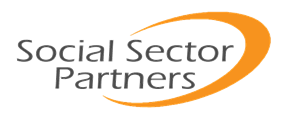Recently, I presented at the BoardSource Leadership Forum in Seattle on The Sustainability Mindset: A New Approach to Board Leadership. Below are some lessons and take-aways from the conference:
According to BoardSource’s Leading with Intent 2017, boards, in general, are doing well with more fundamental board responsibilities — understanding the organization’s mission and providing financial oversight. They continue to struggle with external responsibilities, including fundraising, advocacy, outreach, and community-building.
A key reason boards struggle with these external responsibilities is because their primary role is expected to be one of fiduciary oversight – that is reviewing and approving budgets, establishing monetary policies, and complying with the applicable federal, state, and local laws to adhere to its mission. Fiduciary oversight is vital, but it should NOT be the primary focus of your board.
You hear board members say things like, “Well, we got a clean audit.” And they think that must mean the organization is healthy. But a “clean audit” – meaning there are no material findings on financial reporting or non-compliance with legislation – just means the numbers are accurate not that the organization is healthy. A clean audit can show that you are accurately bleeding to death.
Board members need to separate their fiduciary or compliance roles with their real role as guardians of the organization and its mission. Getting a ‘clean audit’ or submitting your IRS Form 990 on time will not save an organization from financial ruin! Rather, the board needs to focus on what is called the “generative model of governance.” Generative thinking is the board working in partnership with the chief executive to analyze problems and tackle ambiguous situations, which helps shape the organization’s strategies and decisions.
Finance is not simply about balance sheets and income statements, it is about decision making.
It is about having the timely, accurate and transparent financial data that board members, senior leadership, and program staff need to make better decisions. It is about creating a culture that understands what it really takes to deliver on mission and is committed to building a revenue and business model that ensures financial sustainability and drives impact.
Financial sustainability requires that the board moves from a box-checking fiduciary approach to a strategic thinking, decision focused way of working together. Building the right board will take time. It means identifying, cultivating and recruiting the right board members. It will mean orienting, activating and educating your board members. And it may even mean rotating members off the board to make way for the right leaders. But while you are building the right board, there are some things you can do right now to get moving in the right direction.
So how do you get your board to Think Money First?
Raise the Bar! Too often, the financial leadership on the board is delegated to the lone “numbers person” on the board – the accountant, banker or financial advisor. But if the whole board is making strategic and programmatic decisions, then, in turn, the whole board needs to understand the financial implications of those decisions, the full cost of those decisions, and how they will raise the money needed to implement those decisions.
Focus on the Big Picture! While it is useful to have the finance or audit committees review detailed financial and accounting reports,  having your full board slog through some finance packet with pages and pages of reports and rows and rows of numbers in hope of finding some piece of useful information is not the way to build a high performing board. It is not whether you “gave them the information,” it is, did you give them the right information. Boards need to work with staff to develop tangible, meaningful internal financial reports and dashboards that present the key pieces of financial data that board actually needs to make strategic decisions.
having your full board slog through some finance packet with pages and pages of reports and rows and rows of numbers in hope of finding some piece of useful information is not the way to build a high performing board. It is not whether you “gave them the information,” it is, did you give them the right information. Boards need to work with staff to develop tangible, meaningful internal financial reports and dashboards that present the key pieces of financial data that board actually needs to make strategic decisions.
Own your Numbers! If boards are your champions and are to be the guardians of the organization’s mission, then they need to understand both the organization’s programmatic and business needs. That is, they need to be able to communicate the impact of your organization, but they also need to be able to articulate what it really cost to achieve that impact.
Building a culture of financial sustainability and impact on the board is a critical factor in ensuring that your organization will be able to deliver on mission but now as well as in the future. The real difference between an organization that is surviving by exploiting sweat equity, an organization struggling to keep the doors open and the lights on, and an organization that is thriving and achieving real impact is not found on the balance sheet or income statement. The real difference is the board.

